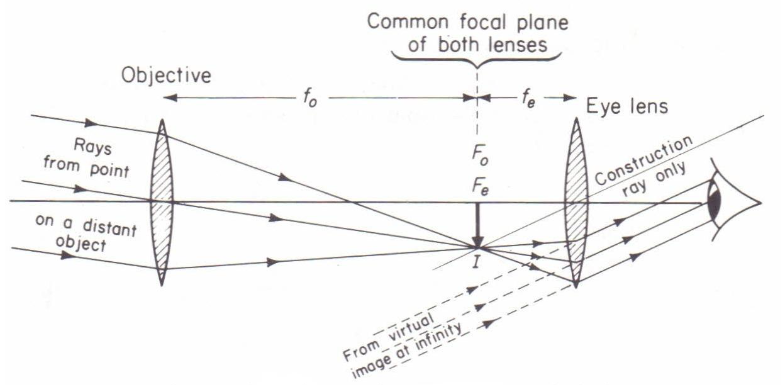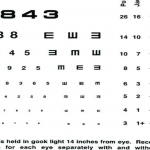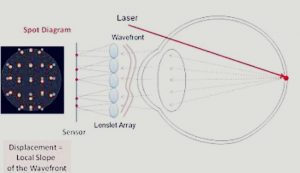The Astronomical( kepler’s) Telescope consists of two convex lenses separated by the sum of their focal lengths. This type of system produces a Magnified inverted image. Prisms or mirrors are needed to invert the image, so it will be in the same position as the object when the telescope is used. The application of this system in low vision is limited because of the size and weight of the elements involved.
Astronomical systems can usually be focused from infinity to about 250 mm. The image viewed through a Keplerian system is inverted. An erecting prism then creates an upright image suitable for terrestrial observation.
Keplerian or Astronomical systems are useful as magnifying visual aids because they provide higher magnification than Galilean systems. They are often used as advanced systems in low vision care. For instance when visual performance has deteriorated and the patient is already using a Galilean system and is thus familiar with handling telescopic systems.
Magnifications from 3x to 6x are mounted in telescope frames. In the event of higher magnifications, monoculars help patients find their way outdoors.
Keplerian systems from SCHWEIZER can be used as telescopic systems in three different ways:
Standard focus systems:
Standard systems that can be focused from infinity to about 25 cm. The system can be set to the required distance.
Systems with individually set focus range:
The focus range is limited, e.g. from 25 cm up to the distance required for watching TV. A focus stop ring acts as a stopper and facilitates the use of Keplerian systems. The eye care professional adjusts the telescope focus to the desired distance, e.g. for watching TV, and fastens the focus stop ring on the housing to act as a hard stop when focusing. For closer working distances, e.g. reading, the visually impaired person can turn the objective lens outward until the image is crisp and clear. Turning the objective lens back until the hard stop is reached, refocuses the telescope for the original application, such as watching TV.
Fixed focus systems:
As the name suggests, the system focus is fixed. The eye care professional first adjusts the telescope focus to a specific distance (e.g. for watching TV) and then locks the setting using locking screws in the telescope housing. For closer working distances, front cap lenses can be used.
Keplerian or Astronomical systems are offered as advanced solutions if higher magnification is required than Galilean systems can provide. Although they are fitted like Galilean systems, eye care professionals need to bear in mind that the eyepiece pupil diameter of 3 mm is rather small, resulting in a smaller field of vision. By contrast, the back vertex distance during the trial frame test is rather large.
Some optical facts:
Keplerian telescopes provide additional benefits for bioptic use over Galilean types. Originally designed for astronomical use, Keplerians provide a wider field of view than Galileans of comparable magnification (Mx).
Keplerian telescopes for astronomy provide a reversed and upside-down image, but for patients the image must be upright and translated left-to-right. Image inversion/translation was achieved at first using Porro prisms, named after their Italian inventor. Porro prism binoculars have the characteristic, dog-leg shape where the front lenses are more widely spaced than the lenses close to the eye. A more compact prism design is the lightweight Pechan-Schmidt combination, known generally as roof prisms, which have become popular in higher quality binoculars. Prisms offer the additional benefit of ‘folding’ the optical path hence shortening the physical length of the telescope.
.One restraint of Keplerian designs is eye relief— the distance of the exit pupil from the back of the telescope (the eyelens). This distance is usually about 9 – 10 mm (3/8”). The exit pupil is the image of the front lens (objective lens) of the telescope (see Fig. 2). It should be centered on the patient’s pupil and be positioned at the eye relief distance to achieve the widest field of view, which means that the telescope eyepiece must usually extend through the spectacle lens. Demonstrating a Keplerian telescope positioned in front of spectacles will usually limit the field of view width.









